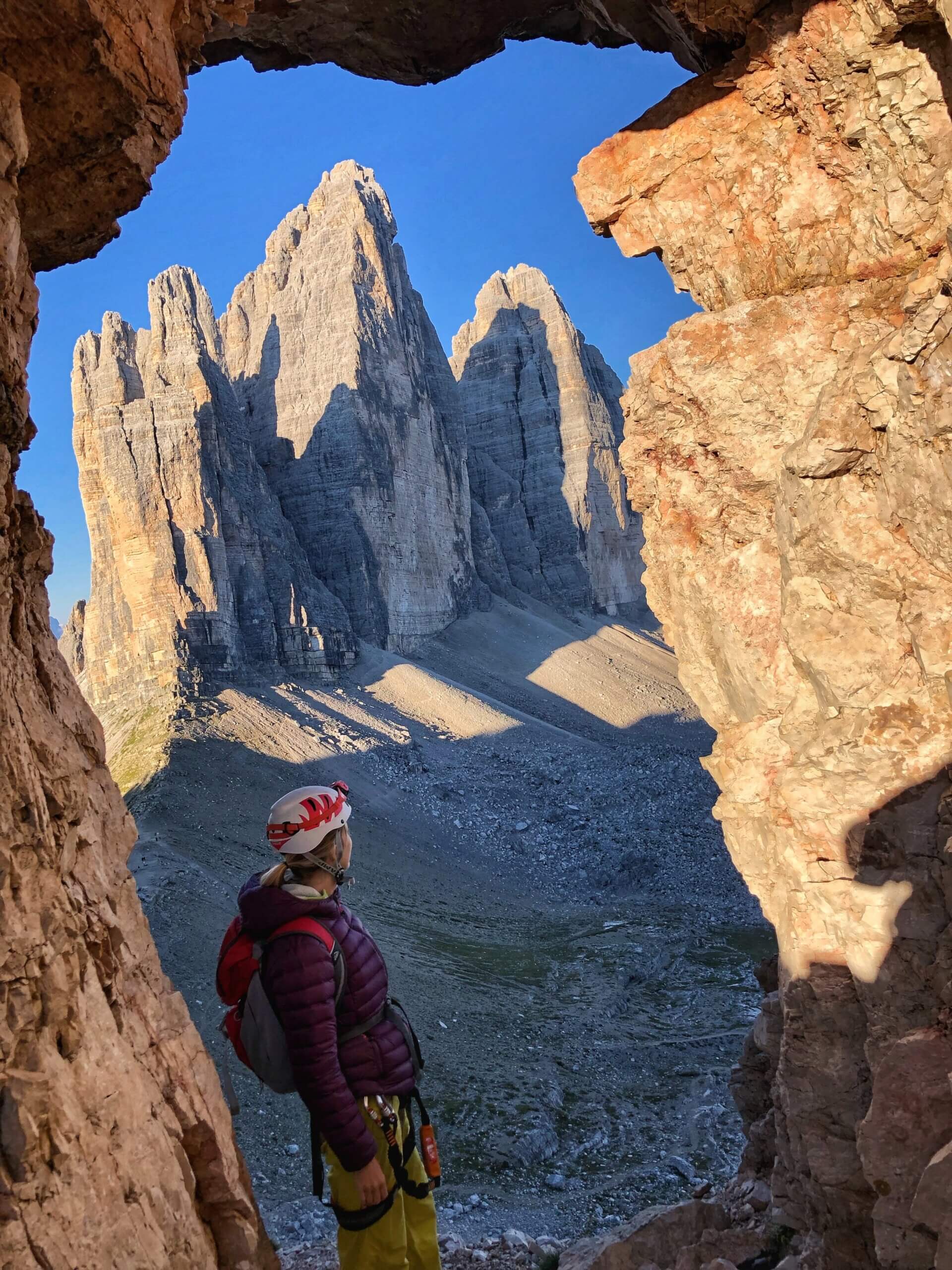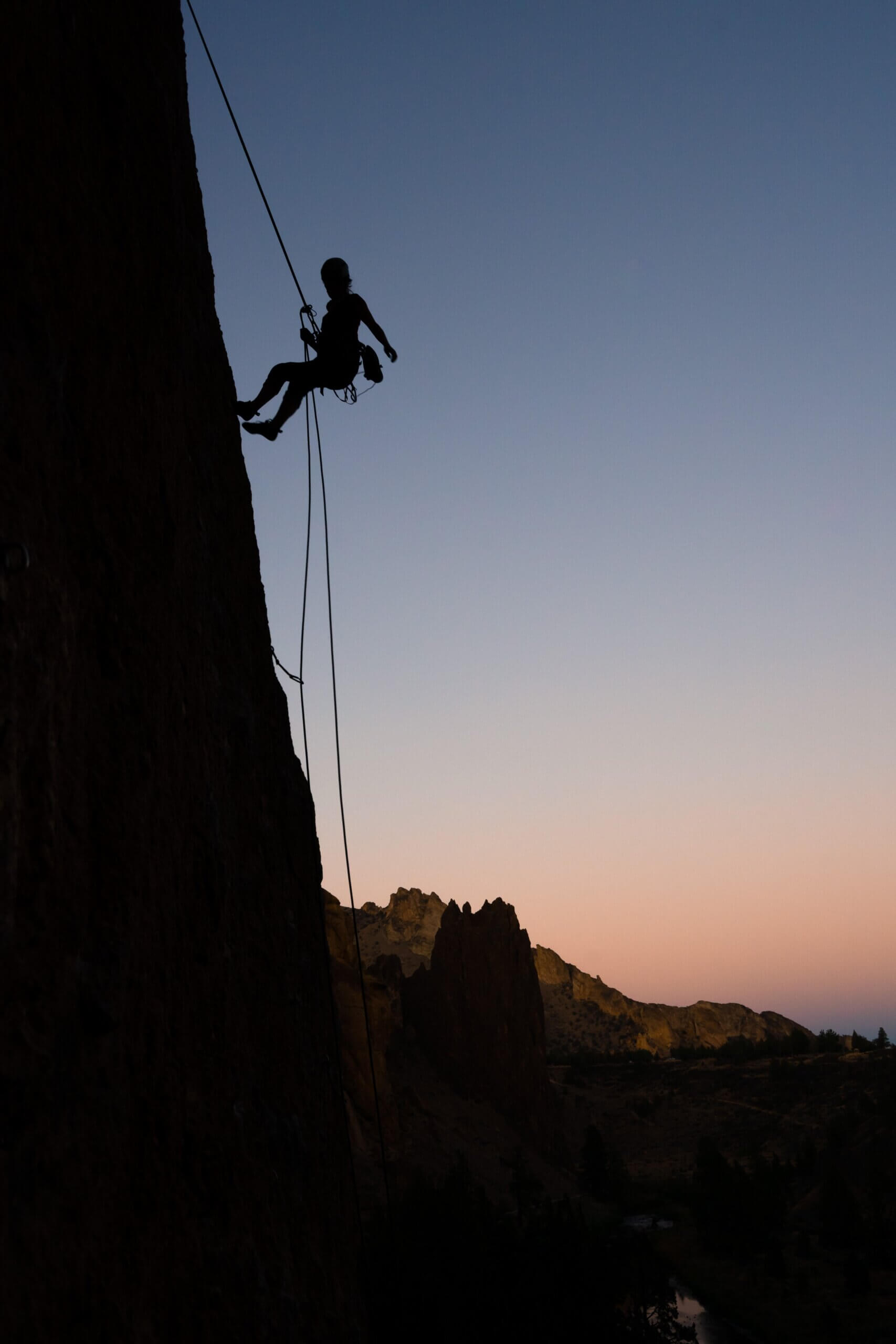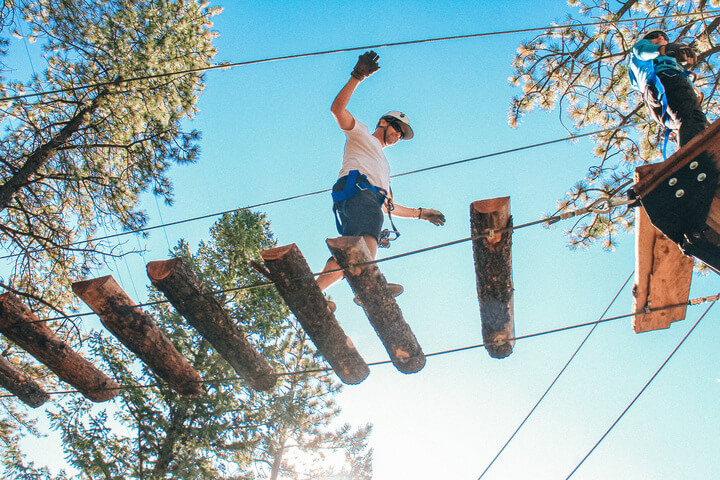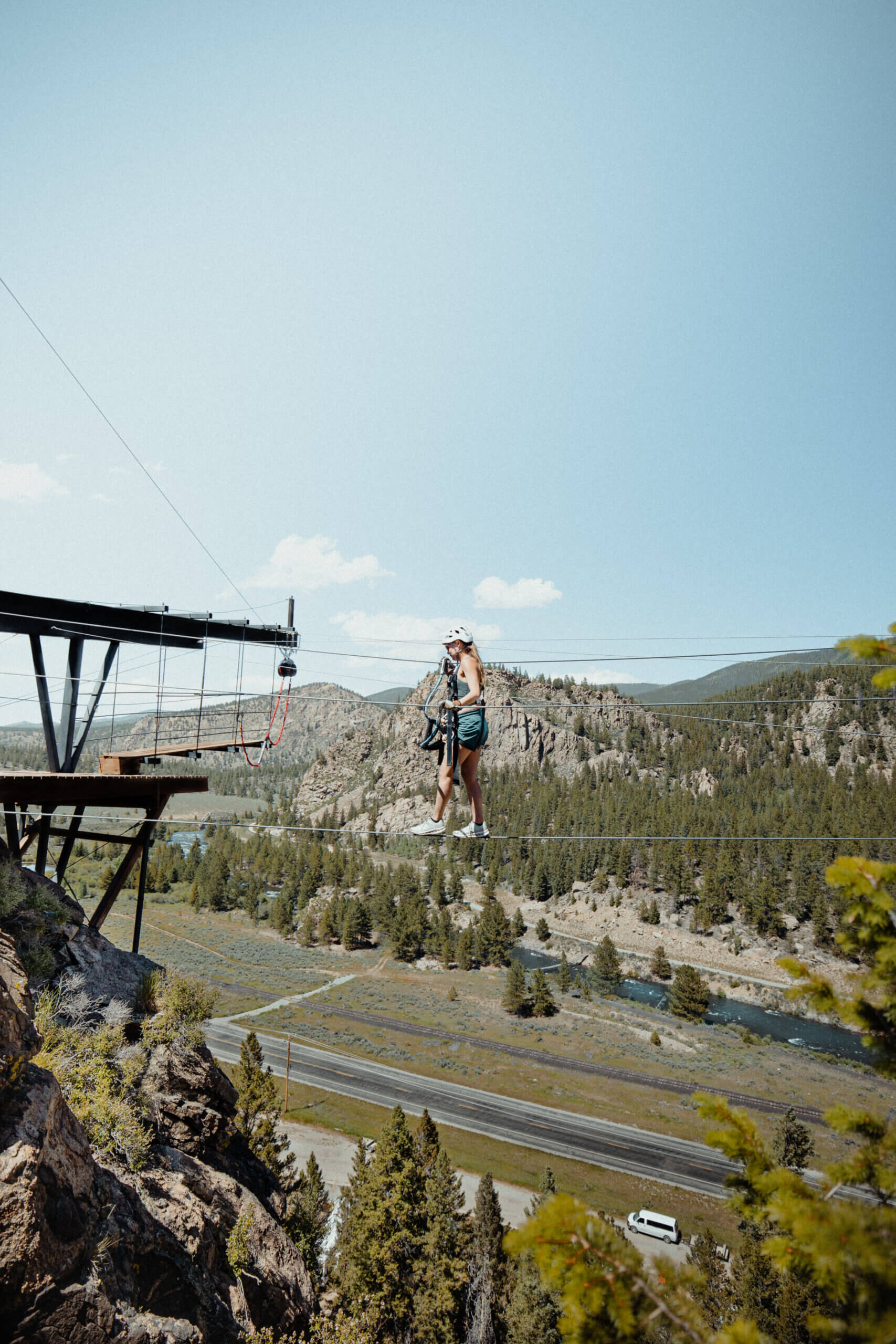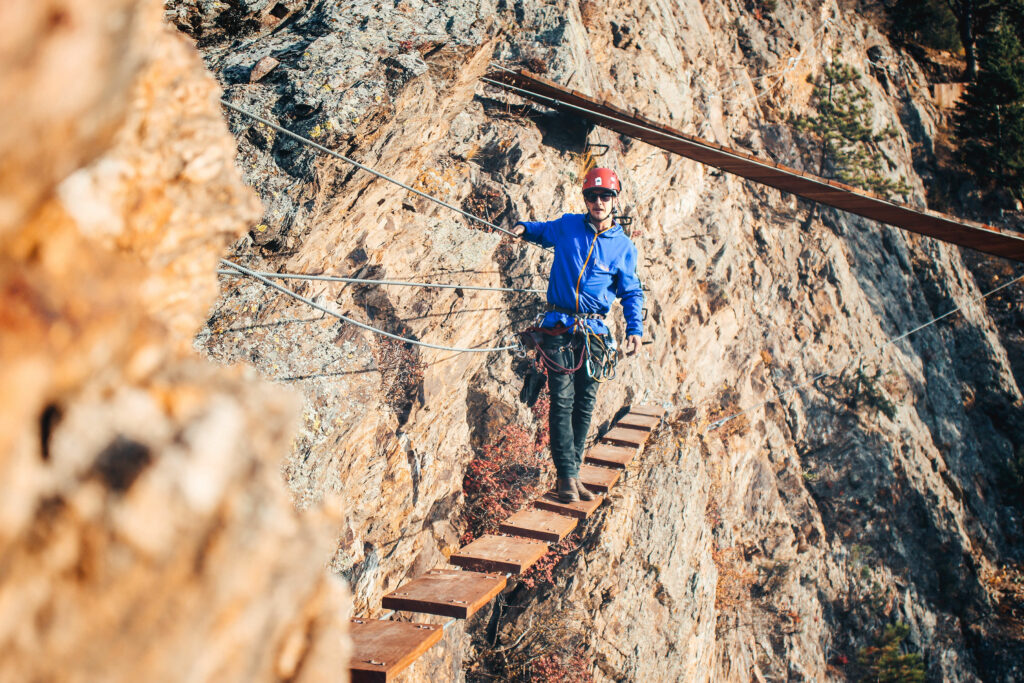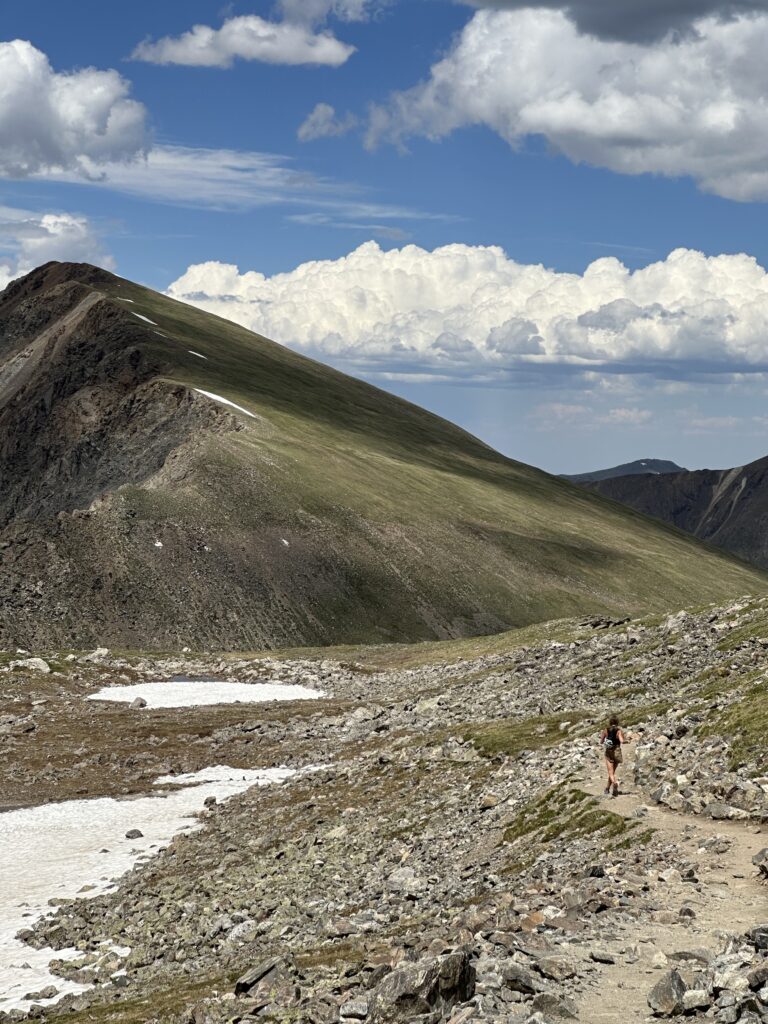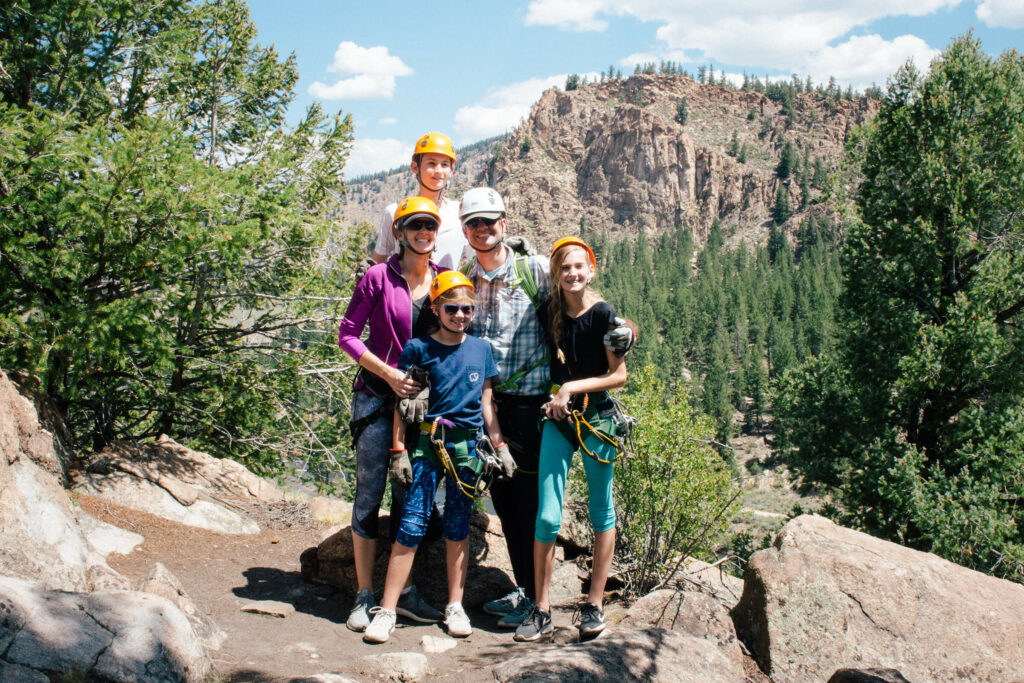Via Ferratas, which translates to “iron path” in Italian, have increasingly become a popular adventure choice for climbers and non-climbers alike. Originating in the Italian Alps during World War I as a way to move troops, these routes have expanded across the world, offering thrilling climbs aided by steel cables, ladders, and bridges.

Colorado boasts several unique Via Ferratas, with both guided courses and unguided options. When it comes to deciding between guided and unguided Via Ferratas, each option has its own merits. The choice for you depends on your experience, desire for knowledge, and your personal climbing goals. Let’s delve deeper into the pros and cons of each.
Unguided Via Ferratas
Unguided climbing is an enticing option for the seasoned climber. Here’s why:
1.Flexibility: Going unguided allows climbers to move at their own pace. Without the constraints of a group or fixed schedules, climbers can decide when to start, pause, or finish.
2. Familiarity: For those who have done a particular Via Ferrata before, there might be comfort in knowing the route and its challenges. This allows for a potentially quicker and more personalized experience.
3. Autonomy: The experienced climber often seeks the thrill of conquering challenges on their own, relying on their skills and instincts.
However, while unguided Via Ferratas might sound appealing to the veteran climber, it’s worth noting the potential downsides. Unguided climbing can be riskier, especially if one is unfamiliar with a route. Plus, there’s the chance of missing out on the rich history and unique features of a trail that a guide might provide insight on.
In Colorado, both the Ouray Via Ferrata and Telluride Via Ferrata represent unguided climbing experiences. The Telluride Via Ferrata is located in the San Juan mountains and offers stunning views of the Bridal Veil Falls and Ingram Falls.
The Ouray Via Ferrata offers two different climbing routes, a downstream and an upstream route, with unique features including a “Sky Ladder” “Sky Climb.” Local companies also provide guided services for visitors wishing to undertake this climb.
Guided Via Ferratas
Engaging in a guided Via Ferrata climb includes many advantages:
1.Interpretation: Guides are not just safety providers; they are storytellers. They can provide historical context, point out geological wonders, and share intriguing tales about the route you’re climbing.
2. Safety: Especially for beginners, having a guide ensures that all safety measures are observed. They ensure that climbers use equipment correctly and follow the safest path.
3. Orientation: Before embarking on the climb, guides usually offer an orientation, familiarizing climbers with the equipment, the route, and what to expect. This preparation can be invaluable, especially for those new to Via Ferratas.
4. Enhanced Experience: Even for the climber who has conquered numerous Via Ferratas, a guided experience can still feel fresh and informative. Guides might introduce climbers to sections of a route they missed or provide interesting tidbits that enhance the overall experience.
If you’re looking to conquer a Colorado Via Ferrata under the expertise of highly-trained guides, check out our Mount Evans Via Ferrata course, as well as our Granite Via Ferrata. Both courses are built directly into the mountainside, offering a unique guided climbing experience, as visitors traverse the Colorado Rockies.
AVA’s Granite Via Ferrata takes you high above the Arkansas River and Arkansas River Valley, offering stunning views and even the chance to plunge 80 feet on Colorado’s highest flight line. The Mount Evans Via Ferrata course also provides a challenging climb, as adventurers navigate the mountainside above the Chicago Creek and Idaho Springs, crossing bridges and traversing across iron rungs and bars.
Both guided and unguided Via Ferratas have their advantages. For the seasoned climber looking for autonomy and flexibility, going unguided on familiar routes can be a rewarding experience; however, even for the experienced, guided climbs offer an enhanced understanding and appreciation of a route.
Ultimately, the decision between guided and unguided should be based on personal preference, experience level, and what climbers hope to gain from their Via Ferrata adventure. Regardless of the choice, the sheer thrill of scaling heights, aided by iron paths, makes Via Ferratas an experience worth pursuing.

